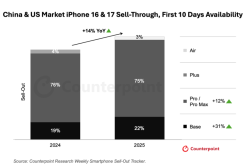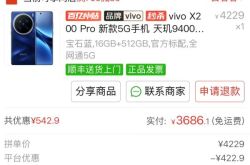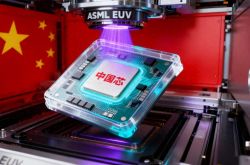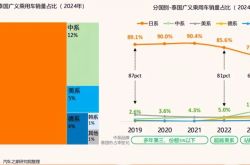Domestic AI Leaps Past 'Computing Power Anxiety' Era
![]() 09/08 2025
09/08 2025
![]() 493
493
In July 2025, NVIDIA CEO Jensen Huang made a striking admission at a Beijing industry summit: "China now boasts a robust computing power foundation. Persistent technological restrictions will only hasten local substitution." This statement underscores the market upheaval triggered by repeated U.S. AI chip export controls—from halting H20 chip shipments in April (costing NVIDIA $5.5 billion in quarterly write-downs) to July's sales resumption amid domestic chips capturing nearly 30% market share. Over three months, China's AI landscape has undergone structural transformation. DeepSeek shatters computing power constraints through innovation, Sugon builds open ecosystems to break monopolies, and domestic chips accelerate iterations to achieve performance parity—collectively forging a path of autonomous, controllable intelligent computing.
NVIDIA's China Dilemma and Accelerated Localization
"Prices change daily; even cash-on-delivery requires queuing," a Beijing AI server dealer lamented in early April 2025. When the U.S. abruptly mandated separate licenses for H20 chip exports, panic buying ensued. Servers with eight H20 chips soared from 1 million yuan to 1.4 million yuan. Yet this boom proved fleeting. NVIDIA's 8-K filing revealed $5.5 billion in H20-related inventory write-downs by April 27, with cumulative losses over two quarters hitting $13.5 billion. China's revenue share plummeted from 12.5% ($17.1 billion) in 2024 to 8.3% in Q2 2025, as domestic chips eroded market share.
ByteDance's procurement shift epitomizes this trend. In 2025, the company earmarked 40 billion yuan for AI chips, allocating 60% (24 billion yuan) to domestic options—far exceeding the 16 billion yuan for NVIDIA's specialized versions. Behind this lies rapid domestic chip advancement: Huawei's Ascend 910B achieves H20-level inference efficiency at 70% the price, while Cambricon's Thinker 590 outperforms the H20 by 15% in image recognition. Ecosystem-wise, Huawei's Ascend Cloud adapted to 160+ large models by July 2025, with 800,000+ developers—challenging NVIDIA's CUDA dominance. Huang conceded in a CNN interview: "Restrictive policies inadvertently helped China build its autonomous AI ecosystem, an unintended outcome."
Antitrust pressures compound NVIDIA's woes. In December 2024, China's State Administration for Market Regulation launched an investigation into NVIDIA for suspected Anti-Monopoly Law violations and breaches of 2020 Mellanox acquisition terms. The 2020 ruling prohibited GPU-network equipment bundling and mandated third-party interoperability. Yet Chinese firms reported NVIDIA discriminating against clients using domestic network gear in software updates. Global regulatory scrutiny from France, the EU, and others further weakens NVIDIA's grip.
Despite July's H20 export approval and new RTX Pro models, the market has shifted irreversibly. China's "14th Five-Year Plan" for Digital Economy mandates 40% domestic chip usage in data centers by 2026. A cloud provider procurement manager noted: "We now prioritize domestic chips (50%+ in new clusters) to mitigate geopolitical risks and cut costs." This marks China's AI transition from "passive response" to "proactive strategic planning."
DeepSeek's Precision Revolution and Domestic Chip Adaptation
On August 25, 2025, DeepSeek highlighted in a WeChat post: "The UE8M0 FP8 architecture is tailored for next-gen domestic chips." Unlike NVIDIA's standard E4M3/E5M2 FP8, UE8M0 uses "unsigned bit + 8-bit exponent + 0-bit mantissa" encoding, sacrificing decimal precision for greater numerical range—aligning with domestic chips' strength in integer operations over floating-point calculations. Minsheng Electronics Research Institute calculations show this boosts domestic chip inference efficiency by 40% and cuts memory usage by 50%, resolving prior "underutilized computing power" issues.
This adaptation is part of a broader trend. In February 2025, Loongson and Chasell deployed DeepSeek-R1 7B on Chasell T100 cards in two hours. Loongson 3A6000-powered devices handle AI tasks like document processing independently, with response speeds three times faster than cloud-dependent services. By August, 18 domestic AI chip firms supported DeepSeek models, including Huawei Ascend, Cambricon, and Hygon Information. The Southeast Zhejiang Intelligent Computing Center deployed DeepSeek V3/R1's 671B-parameter inference service using Cambricon's Thinker 590 chips, achieving 85% of H20 performance at 60% the hardware cost.
Financial sector applications underscore this value. A leading city bank adopted "Hygon DCU + DeepSeek" for intelligent document processing, achieving 99.2% OCR accuracy. Stress tests showed a single Hygon DCU card used just 5.7GB memory under high loads, outperforming NVIDIA's A100 in stability. The bank's technical lead wrote in the "2025 AI Ecosystem Practices in Financial IT Innovation White Paper": "Deep synergy between domestic computing power and large models has reduced annual maintenance costs by 42%." This "software-defined hardware" model is breaking technological blockades.
From Point Breakthroughs to Systemic Innovation
Domestic computing power's rise reflects systemic innovation, not mere substitution. Huawei's Ascend 910C, built on SMIC's 7nm (N+2) process, packs 53B transistors and delivers 1,200 TFLOPS FP16 performance. Running a 671B-parameter model, it lags NVIDIA's H100 by just 0.03ms in latency while exceeding its energy efficiency (0.52 vs. 0.37 TFLOPS/W) by 40%, saving ~50,000 yuan annually in electricity. Cambricon's Thinker 590, also on 7nm, supports FP16/BF16 and boosts edge computing density by 300%.
Algorithm and model breakthroughs are equally striking. High-Fly Quant's DeepSeek-V3, a 671B-parameter MoE model, activates 37B parameters per token. It outperforms overseas open-source models in code generation and mathematical reasoning, nearing GPT-4 levels. Training efficiency is remarkable: 2.664M GPU hours for pre-training on 14.8T tokens—30% less than comparable models. Commercial applications thrive: a legal tech firm using DeepSeek-V3 quadrupled document processing efficiency, while a tech enterprise's AI customer service system boosted satisfaction by 28 percentage points.
More strategically, China is building an open computing infrastructure ecosystem. In September 2025, Sugon unveiled China's first AI computing open architecture at the Smart China Expo, partnering with Huawei, ZTE, Inspur, and iFLYTEK. The architecture includes hardware interface specs, software adaptation standards, and computing power scheduling protocols. It enables multi-vendor chip compatibility, with clusters of 10,000+ AI chips achieving 10^22 operations/second—sufficient for trillion-parameter model training. Sugon CEO Li Jun stated: "Openness and collaboration drive AI computing's future. Closed architectures stifle innovation and raise costs." Initial successes include a joint lab improving financial risk control data collaboration by 40%, with model accuracy exceeding 95%.
Conclusion
By 2025, China's AI industry has transcended "chokepoint" anxiety, entering a "systemic innovation" phase.
Challenges remain. Yu Xiekang, VP of the National Integrated Circuit Packaging Alliance, noted: "China lags international leaders by 3-5 years in advanced manufacturing, with high-end chip fabrication as a bottleneck." The next phase demands breakthroughs in core manufacturing while sustaining open collaboration. Platforms like the AI Computing Open Architecture Lab and industry-academia-research mechanisms are driving this transition from "point breakthroughs" to "system breakthroughs," fostering sustainable innovation.
NVIDIA's experience offers a cautionary tale: technological blockades often accelerate alternatives. Huang warned: "The risk of permanently losing China's market is real."
DeepSeek's UE8M0 proves software innovations can bridge hardware gaps; Sugon's open architecture demonstrates ecological collaboration's power; and domestic chip iterations reveal a viable self-reliant industrial chain. These pillars form a "model-chip-system" trinity for China's AI ecosystem.
A quiet industrial revolution is underway in China. Its goal is not mere decoupling but establishing an innovation-driven, openness-promoted, ecosystem-won paradigm for industrial development.








